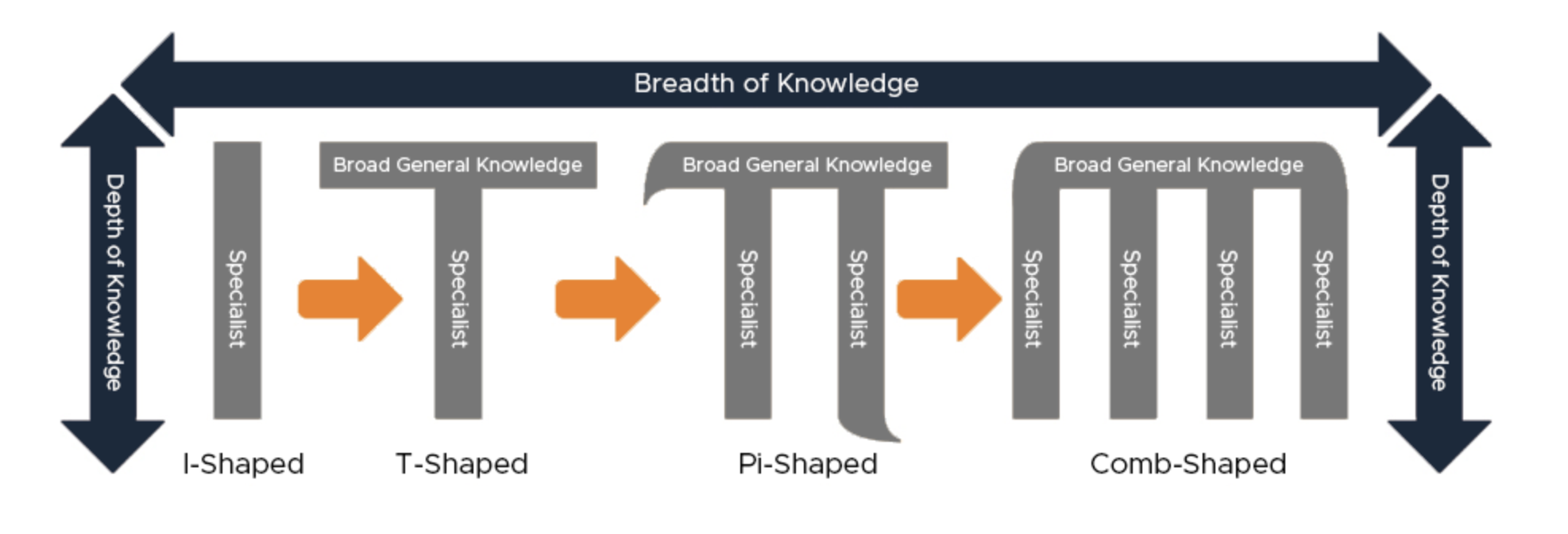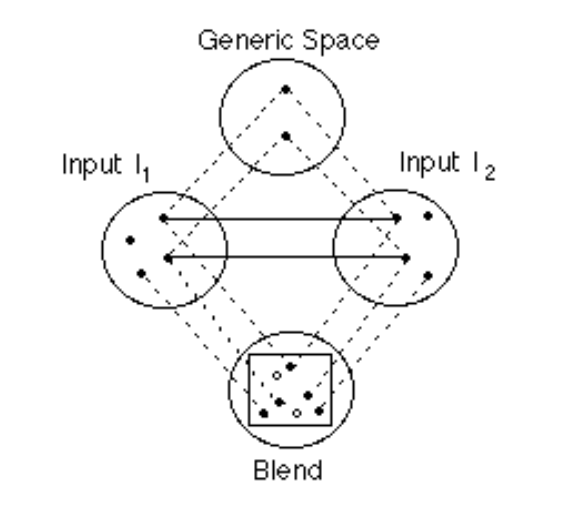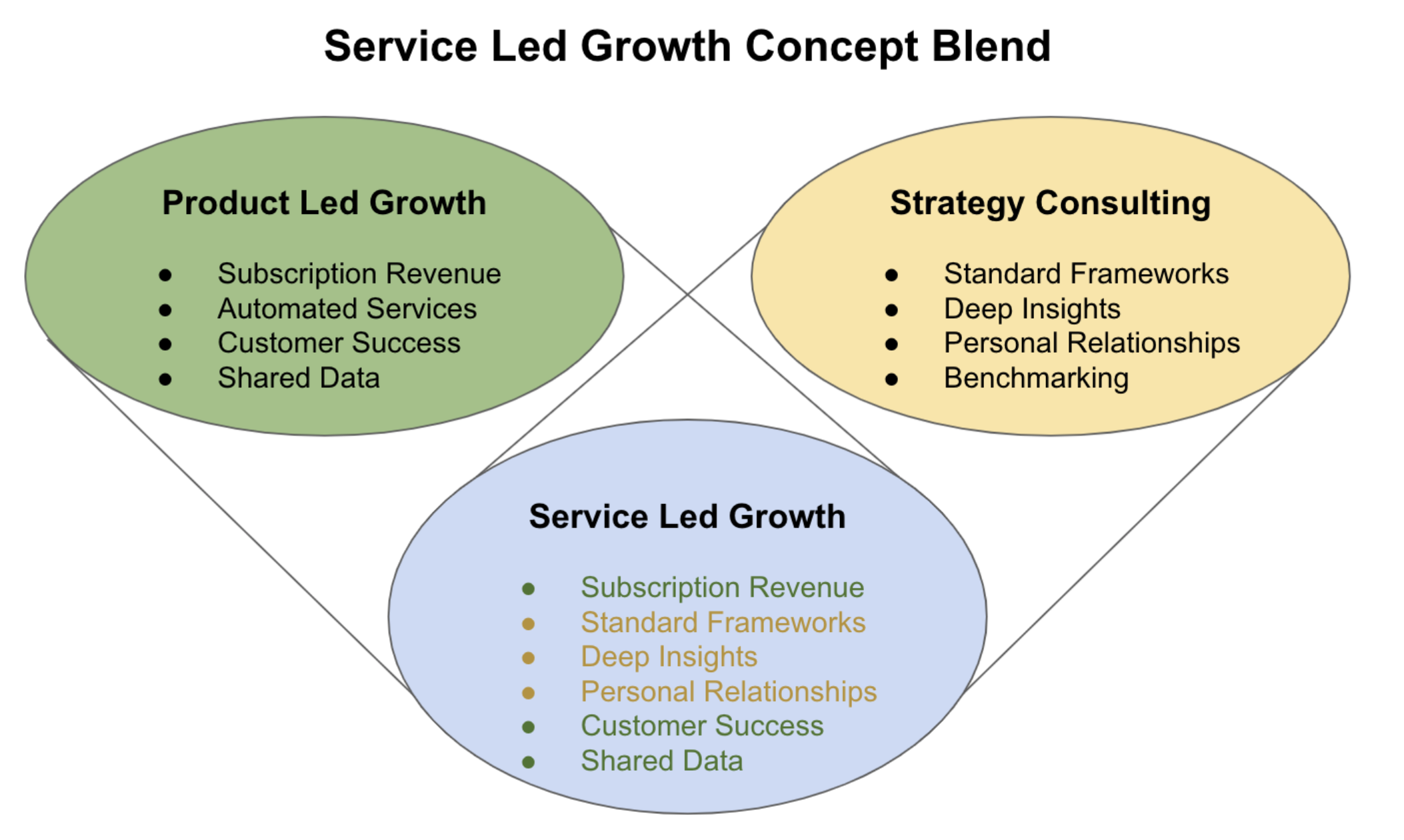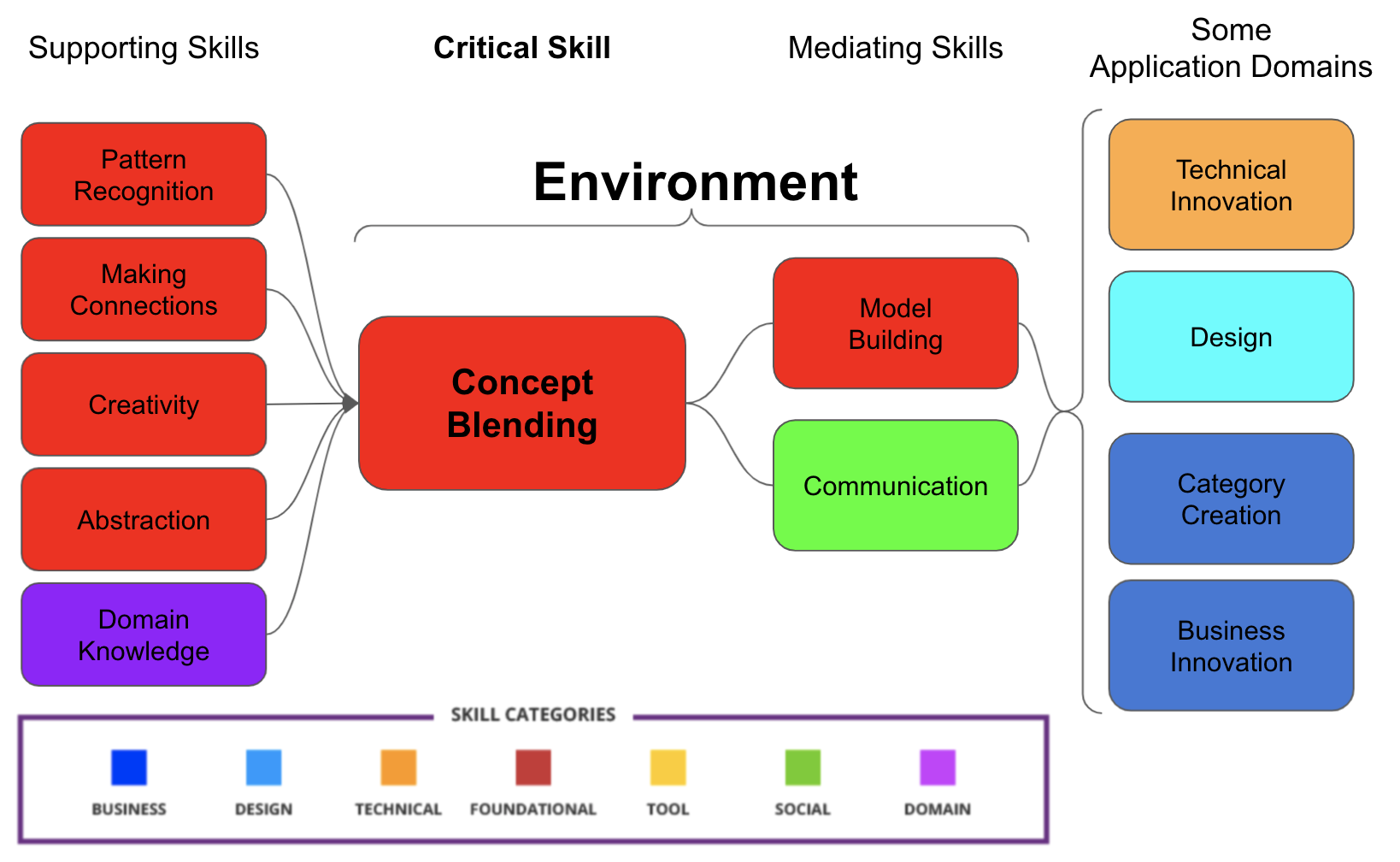Critical Skills - Concept Blending
Steven Forth is co-founder and managing partner at Ibbaka. See his skill profile here.
Much of our work is focussed deep in one domain. That is understandable, there is so much to know. I am reorganizing the books in my house trying to impose some order. One of my own obsessions is pricing and its associated disciplines of market segmentation and value management. I am still sorting but already have unearthed some forty books on this theme. This is one area where I like to go deep.
But going deep into one domain or discipline can leave you with blinkers. Going deeper and deeper into a speciality can lead one to lose the forest for the trees and to get trapped within assumptions about what is acceptable, possible or correct. One can see this in the pricing discipline, where many people have been caught by the assumption that pricing is price setting or price optimization, or that market segmentation in pricing means to differentiate customers on the basis of their price elasticity curve. It is becoming apparent that the deep learning community is getting caught in a specialist trap that is preventing them from seeing other approaches to artificial intelligence.
One answer to the specialist quandary is to argue that we need more generalists. There have been books on this like David Epstein’s Range: Why Generalists in a Specialized World. In the talent management space, there has long been talk of people who have T-Shaped skill profiles and then π (pi) shaped skill profiles. More recently, there has been talk of comb-shaped skill profiles.
The above image is taken from David Crouch’s excellent article CONTINUOUS LEARNING: HOW THE DIGITAL BUSINESS PUTS KNOWLEDGE TO WORK. A similar diagram can be found in Reframing XR & AI for the Future of Education by Garth Nicols.
A person with a T-Shaped skill profile has broad general knowledge that can be used to put specialist knowledge in context.
A person with a Pi-Shaped skill profile has the general knowledge and two different specialities.
People with comb-shaped profiles have specialist knowledge of multiple disciplines (it is not clear how real this is, as one person said, “if I have a comb shaped profile most of the teeth are short and a lot are broken”).
Is it enough to simply have people with two (or more) areas of expertise? One can get a similar effect by building teams with diverse skills. Brent Ross will be talking this in his upcoming webinars on Skill Based Teams.
What really matters is the ability to bring insights and frameworks from two (sometimes more) different disciplines together to make a new synthesis. Over the past twenty years a lot of work has been done to formalize this and study its implications for human cognition and innovation.
This work has been led by Mark Turner and his many collaborators. There is a wonderful website where the latest research as well as classic studies are shared - Blending and Conceptual Integration. The underlying model for this work is shown below.
A Google search will find many other fascinating examples, from House and Boat (houseboat) to window and file (to get the window metaphor for the user interface). At Ibbaka we frequently use concept blending to come up with new solutions. An example is the Service Led Growth strategy that we have helped several of our customers execute on.
Above is the concept blend for the Service Led Growth model.
Given our need to innovate, connect different domains, and to escape from the specialist mind trap, there seems to be a good case for concept blending as a critical skill.
Using our conventional model for a critical skill, let’s unpack this a bit.
The Ibbaka critical skill model asks
What skills support the acquisition of the critical skill?
What skills mediate its application?
What are the domains where it can be applied?
As always, we use our skill category system to organize the skills into business, design, technical, foundational, tool, social and domain.
The supporting skills for concept blending are
Pattern recognition - important to see the patterns inside a domain
Making connections - concept blending relies on making connections between different domains
Creativity - is needed to find unexpected, often hidden, connections between domains
Abstraction - is needed to create models
And of course, one needs to have reasonably deep knowledge of two domains. People with π shaped skills tend to be better at concept blending. Innovation teams should be designed with concept blending in mind.
Applying concept blending requires skill in model building (see Scott Page’s wonderful book The Model Thinker for a deep description of the skills needed to build models). Concept blends are meant to be intuitive, and resonate with other patterns people already know, but I have found it takes good communication skills to introduce a new concept blend to the world.
Concept blending can be applied anytime one needs to innovate to solve a problem or to bring two different worlds together. We have seen it used to solve business problems, come up with new approaches to user interfaces, and even to create whole new categories of solution. Next time you are faced with an intractable problem, apply this simple version of concept blending to see if it helps you to move forward.
Look for two or more other spaces that might have a related problem
Make a simple list of the key attributes of each domain
Try out different combinations of the attributes of the domains (I have had luck using random combinations to move forward when I get stuck)
Focus in on two domains and develop each domain model a bit more
Create the concept blend by picking a few attributes from each domain model
Sketch out several ways to implement the concept blend
Test the implementations - once the new model and the world begin to interact the model begins to evolve
Ibbaka posts on critical skills
Critical Skills for 2022 - First Impressions of Survey Results
Critical Skills - Concept Blending (this post)
Critical Skills - Generative Thinking (Interview with GK VanPatter)
Critical Skills for the Future of Work - Managing Trade Offs
Critical Skills for the Future of Work - What are the Critical Skills?






